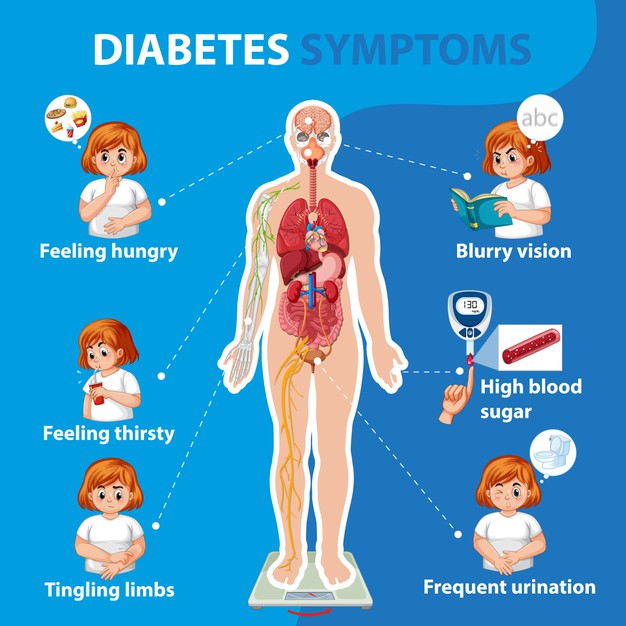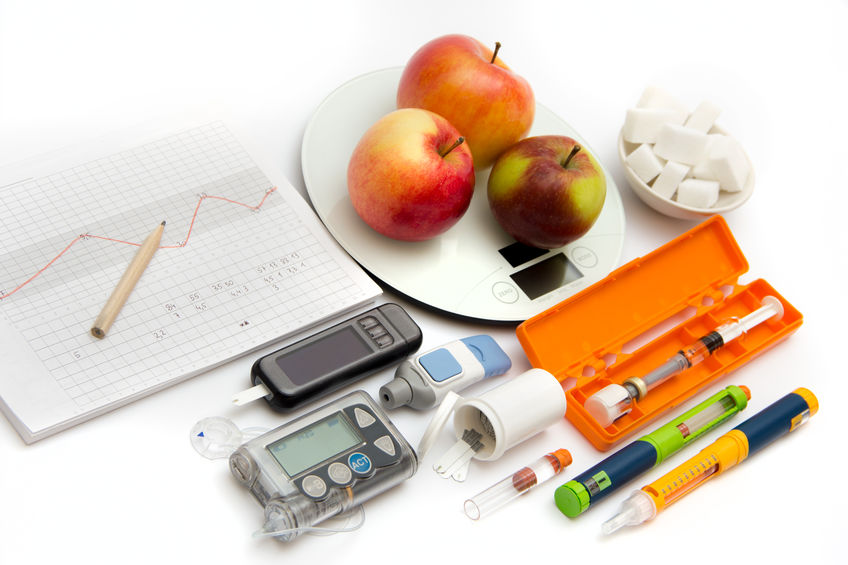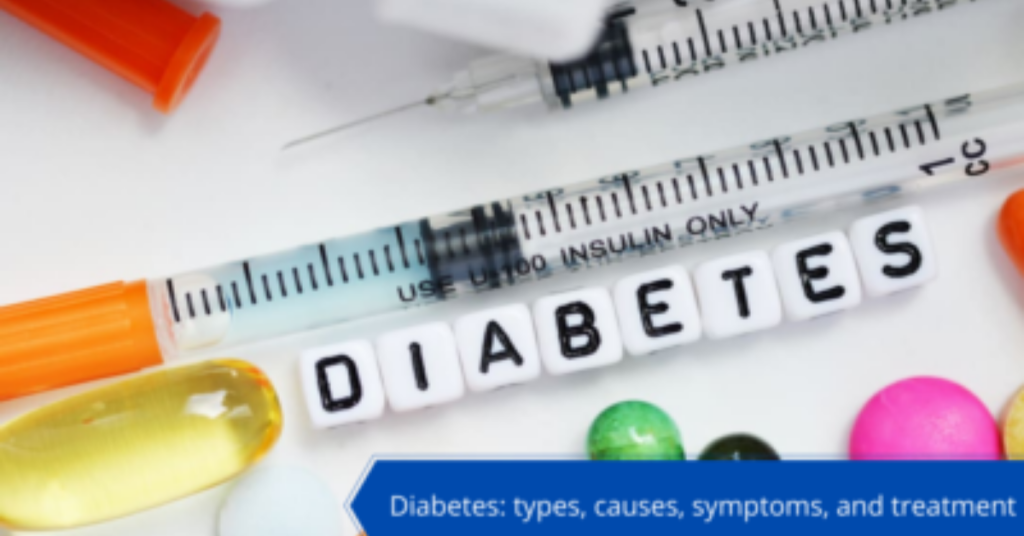Contents
Diabetes Overview
Diabetes is a health condition that usually occurs when your blood sugar is higher than usual. Your body acquires energy from the glucose or sugar that comes from the food. This sugar is then transferred by the insulin (a hormone that is created by the pancreas) to the cells, where the sugar is stored and later used for providing energy to the body.
However, during diabetes, our body is unable to produce more insulin or dies not to use the existed insulin accordingly due to which, the glucose stays in the blood and increases the blood sugar level.
Types of Diabetes
Mainly there are two types of diabetes including type 1 and type 2 diabetes. Both these conditions are slightly different, yet both serious. There are other rarer conditions as well but one thing that remains common across all is that it usually occurs when your blood sugar is higher more than usual.
Type 1 Diabetes
Around 10% of the world’s population is suffering from type 1 diabetes. This problem is not linked with unhealthy eating or poor lifestyle practices. It develops on its own. During type 1 diabetes, our body’s immune system harms and destroys the insulin-producing cells of the pancreas, due to which the pancreas eventually stops producing insulin. Insulin is crucial for our body, as it enables the glucose to reach our cells so our body could get the required energy.
If you are having type 1 diabetes, then your body can break down the carbohydrate-rich food into glucose, however, it cannot when the glucose reaches your bloodstream, it cannot enter into the cells without the help of insulin. It eventually increases the level of insulin in the blood.
Type 2 Diabetes
Around 90% of the world’s population is suffering from type 2 diabetes. During type 2 diabetes, either the insulin made by the pancreas does not work properly, or the pancreas does not make any insulin at all. Insulin is crucial for our body. It helps the glucose to reach our body cells so that our body could get the required energy.
Our body breaks down the carbohydrate which is received from the food we eat and converts it into glucose. In response, the pancreas creates insulin. However, as the insulin does not work properly, the glucose is not able to enter the cells and the blood glucose level rises. Due to this, the pancreas creates even more insulin. The pancreas of type 2 diabetics gets tired of creating more and more insulin and eventually stops making it. It leads to a high level of glucose level in the blood.
Symptoms of Diabetes
Diabetes is a condition in which your blood glucose level or blood sugar level is higher than usual. It has two main types i.e. type 1 and types 2 diabetes. Apart from this, diabetes has several more types but they all are serious and can be tested by your GP. Diabetes has several symptoms on which, you need to pay special attention, these include:

- You pee a lot because your body tries to release extra glucose from the blood through urination.
- It can also give rise to other symptoms where you feel very thirsty.
- Thrust or itching in the genital area, because excess urination releases glucose which increases the chances of fungal infection.
- You will also feel very tired, as your cells are not able to get the glucose and provide energy to the body.
- In order to acquire energy, our body starts breaking the fat tools, which leads to sudden weight loss.
- Moreover, our wounds take more time than usual to get healthy, as excess glucose restricts the essential nutrients and oxygen to reach our wounds.
- You will also experience blurred vision, as excess glucose slowly reaches our eye lens and makes the vision blurry.
Causes of Diabetes
Type 1 Diabetes
Each type of diabetes has different causes. Causes of type 1 involve your immune system attacking the beta cells of the pancreas that are responsible for producing insulin.
It results in leaving you with no insulin due to which the sugar is not able to be transferred to the cells and it leads to the sugar buildup in your blood. According to various scientists, the major cause of type 1 diabetes is environmental factors such as viruses and genes.
Type 2 Diabetes
There are various causes associated with type 2 diabetes, these include excessive weight, lack of physical activities, family history, blood lipid levels, age, prediabetes, race, and ethnicity. The exact reason for type 2 diabetes is uncertain.
Risk Factors For Diabetes
Risk factors differ according to the type of diabetes. Risk factors for type 1 diabetes include a family history of the same disease, and the presence of certain genes in the body, while risk factors for type 2 include age, obesity or excessive weight, pregnancy, and family history.
Treatment For Diabetics

Diabetes is a serious disorder that can lead to other health conditions including cardiovascular diseases, nerve damage, kidney damage, eye damage, foot damage, skin conditions, hearing impairment, Alzheimer’s disease. It can be treated only with the help of a doctor. It can be controlled using various medications, home remedies and by bringing various lifestyle changes. You can check out our site DiabetesMantra to know more about diabetes treatment options.
Medication
During diabetes, your body stops making enough insulin or no insulin at all. It makes your body incapable of transferring the sugar to the cells and increase its amount in the body. For the treatment of this health condition, a person will need insulin in the form of an injection or by using a continuous pump.
There are five types of injectable insulin:
- Rapid-acting
- Regular or short-acting
- Intermediate-acting
- Long-acting
- Ultra-long-acting
Home Remedies
Home remedies for managing diabetes will include healthy eating and regular exercise.
Healthy Eating: Your doctor might consult you to center your diet on various foods including:
- Eating healthy snacks and scheduled meals
- Eating high-fibre foods including nonstarchy vegetables, fruits, and whole grains
- Having small portion sizes
- Choosing low-fat dairy, low-fat meats, and fish.
- Taking fewer calories
- Choosing healthy cooking oils including canola oil and olive oil

Performing physical activities help you to stay fit and maintain a healthy body. Moreover, it helps in regulating the blood sugar level. Some of the main physical activities for managing diabetes include:
Perform Aerobic Exercise: Aerobic exercises include swimming, walking, biking, and running. Choose the exercise that you enjoy the most and perform it daily for 30 minutes to control your diabetic problem.
Resistance Exercise: It helps in enhancing your balance, strength, and ability to perform daily activities effectively. Several resistance activities including yoga, weightlifting, and callisthenics will help in managing diabetes.
Reduce Inactivity: Lack of physical activity leads to obesity followed by multiple health diseases. Try to limit inactivity and keep performing activities every 30 minutes. If a person continues being active, he might overcome the problem of obesity and the risks associated with it.
A Word From MantraCare
Do you want to get rid of diabetes? Join our online diabetes consultation program and reverse your Diabetes naturally through lifestyle changes such as a Personalized Diet plan, Exercise, dieticians, and health coaches.


